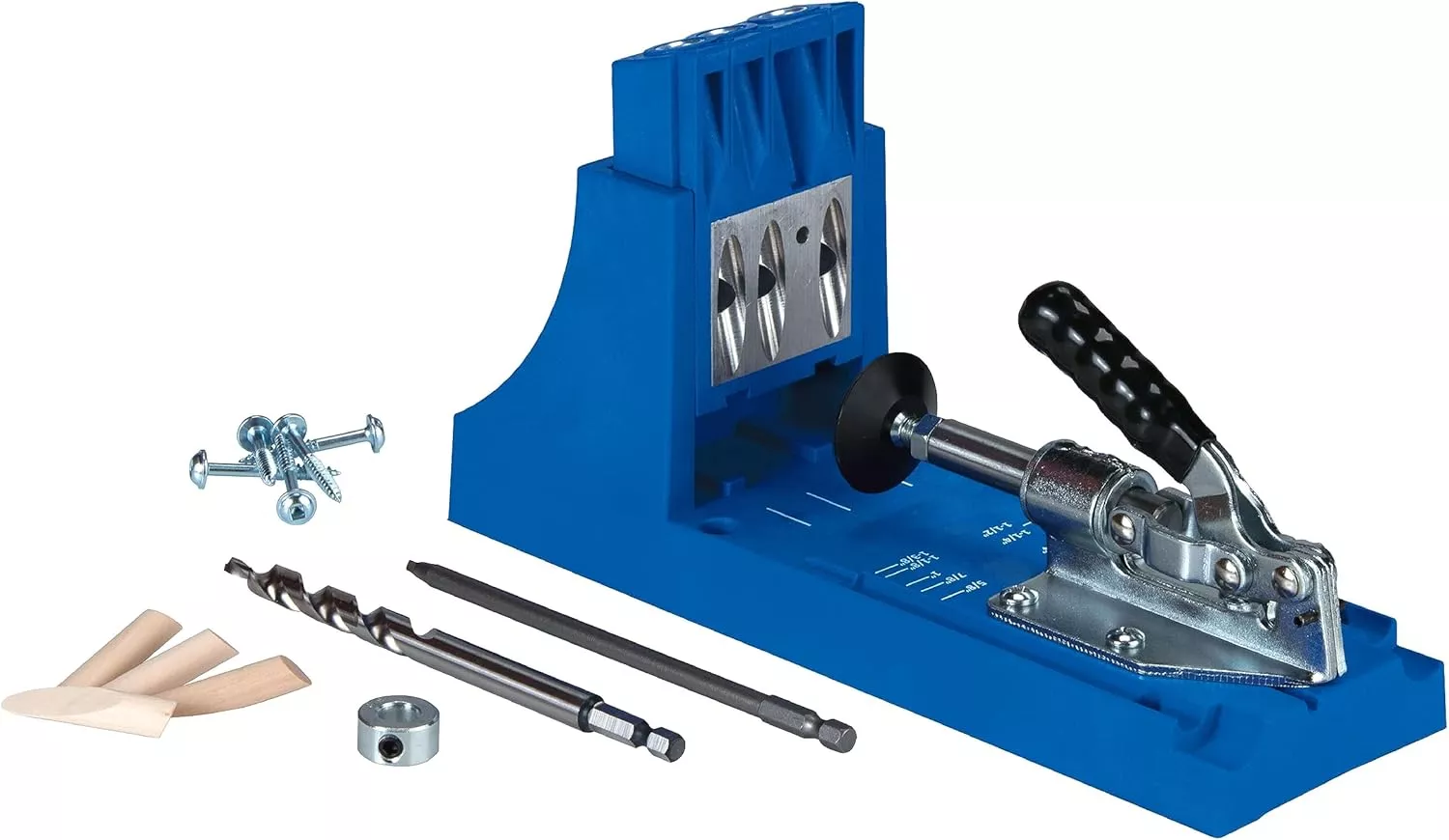
If you’re a DIY enthusiast or a professional woodworker, the Kreg K4 Pocket Hole Jig is an essential tool that can elevate your projects. This review delves into its features, advantages, and potential drawbacks, ensuring you understand the value it can bring to your woodworking endeavors.
Product Features
| Features | Details |
|---|---|
| Product Name | Kreg K4 Pocket Hole Jig |
| Material Thickness Capability | 1/2″ to 1 1/2″ Thick |
| Drill Guides | Easily Adjustable |
| Customizable Setup | 3-Hole Drill Guide |
| Mobility | Benchtop and Portable Use |
| Dust Collection | Adapter for 1-1/4″ Vacuum Hose |
| Included Accessories | Dust Collection Adapter, Easy-Set Drill Bit, Collars, and Sample Screws |
Product Overview
| Pros | Cons |
|---|---|
| Easy to set up and use | Relatively higher price |
| Adjustable for various material thicknesses | Requires accurate cutting to ensure tight joints |
| Portability and versatility for different projects | Learning curve for beginners |
Understanding Pocket Hole Joinery
Understanding Pocket Hole Joinery:
Pocket hole joinery is a woodworking technique that utilizes specially designed jigs to create angled holes in one piece of wood, allowing for screws to be driven at an angle into another piece. This method offers numerous benefits, particularly for those seeking reliability and efficiency in their woodworking projects. One of the most appealing aspects of pocket hole joinery is its ease of execution; using the Kreg K4 Pocket Hole Jig simplifies the process significantly. With this jig, I can create strong, concealed joints that maintain the integrity of the wood’s surface without requiring extensive clamping or complicated setups.
The advantages of this method extend beyond just aesthetics. The strength of the joints formed through pocket hole joinery often surpasses that of traditional joints, like butt or lap joints, largely due to the direct connection provided by the screws. This makes pocket holes perfect for projects demanding durability—think furniture assembly, cabinetry, and more. The Kreg K4 offers precision and consistency, which is invaluable for achieving professional results. Forget fumbling with dowels or tenons; once you embrace pocket hole joinery with the Kreg K4, you’ll find it a go-to technique that consistently delivers reliable outcomes, making it a worthy addition to any woodworker’s toolkit.
Maximizing the Use of Your Kreg K4 Pocket Hole Jig
When it comes to maximizing the performance of your Kreg K4 Pocket Hole Jig, proper setup and usage are key. First, I always start by preparing my materials. It’s essential to ensure that the wood is flat and free from warps or defects. I typically choose a hardwood or plywood because they offer the durability needed for strong joints. Make sure to measure and mark your material carefully; a misalignment can lead to uneven joints.
Aligning joints properly is crucial. When I’m setting up the jig, I position the workpiece snugly against the stop collar. This way, the holes I drill will be perfectly aligned with the corresponding joints on the other piece. I often double-check that I’ve got the right spacing—remember, it’s the small details that often make the biggest difference.
Choosing the right screws is another aspect I cannot stress enough. I always opt for Kreg Screws, as they’re specifically designed for pocket hole joinery. I look for a length that is appropriate for the thickness of the material I’m working with; typically, a screw should penetrate at least 3/4 of the thickness of the adjoining piece.
Common mistakes to avoid include using the wrong drill bit size or inadequate clamping. I’ve learned the hard way that firmly securing the pieces before drilling helps prevent any slippage, which can ruin a project. Taking these small but significant steps ensures that I always achieve the strong, clean joints I’m aiming for.
Conclusions
In conclusion, the Kreg K4 Pocket Hole Jig is a reliable, efficient tool designed for creating strong wood joints. While it may take time to master, its ease of use and flexibility make it a worthy investment for anyone looking to improve their woodworking skills.